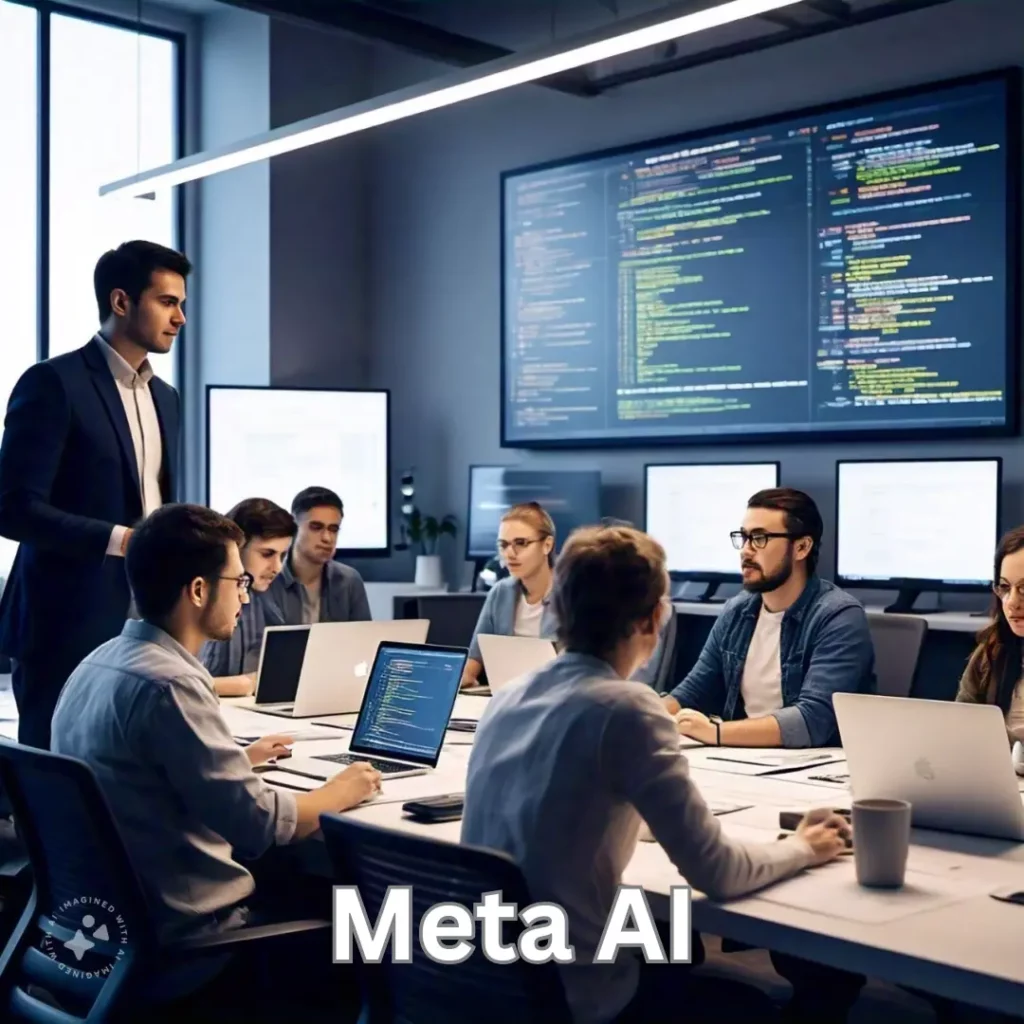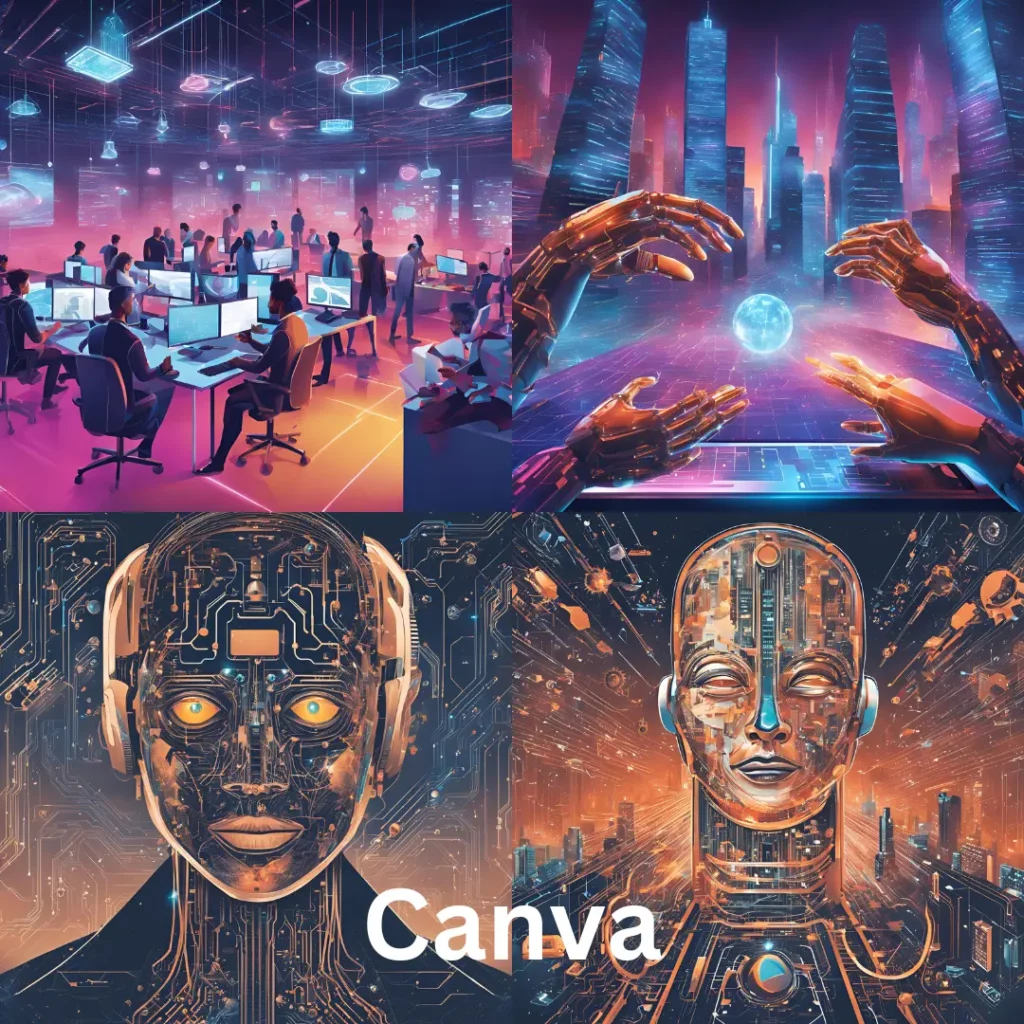Understanding the shifts in the software landscape helps companies align their strategic goals and operational activities with emerging technologies and empowers developers to hone their skills in response to future demands. These insights show tech fans what the future may hold and encourage innovation and creativity for everyone, inspiring a sense of motivation and empowerment.
The Rise of AI in Software Development





Prompt: Create an image for this title: “The Rise of AI in Software Development”
Artificial intelligence (AI) is no longer a buzzword—it’s a reality transforming software development and deployment. In 2025, AI will play a more prominent role in the software industry, affecting areas like programming and testing. The integration of AI into software development processes is set to revolutionize traditional methodologies, making them more efficient and adaptable, sparking a sense of intrigue and excitement about the future.
Automation and Code Generation
AI-powered tools are increasingly capable of generating code, automating repetitive tasks, and optimizing algorithms. This trend will allow developers to focus on more complex problem-solving tasks, reducing development time and increasing efficiency. The automation of code generation facilitates the rapid prototyping and iteration of software solutions, enabling faster turnaround times for projects. By 2025, AI-driven code generation tools will likely become a staple in the developer’s toolkit, offering sophisticated capabilities that extend beyond simple code snippets to full-fledged application components.
AI’s role in code generation is not just about speed but also about accuracy and innovation. These tools can learn from vast datasets and existing codebases to suggest optimized solutions, thus reducing human error and enhancing code quality. Moreover, AI can assist in maintaining consistency across large codebases, ensuring that coding standards and practices are uniformly applied.
Enhanced Testing and Debugging
AI can also revolutionize the software testing process. Machine learning algorithms can identify bugs and vulnerabilities faster than traditional methods, leading to more robust and secure applications. AI testing tools can mimic different situations and user actions. They offer thorough coverage and reveal hidden problems that manual testing might miss. As AI grows, we can expect better testing and debugging tools. These tools will use AI to provide real-time feedback and help improve continuously.
AI’s predictive capabilities in testing are also noteworthy. AI can anticipate potential failure points and suggest corrective measures before they impact end-users. This proactive approach enhances software reliability and helps maintain user trust and satisfaction. Furthermore, AI-driven analytics can provide insights into application performance and user behavior, guiding developers in fine-tuning their applications for optimal efficiency.
AI in Continuous Integration and Deployment
Beyond code generation and testing, AI could redefine continuous integration and deployment (CI/CD) processes. AI systems can handle deployment pipelines. They can automatically roll back changes if they find problems, ensuring new updates work well with existing systems. This reduces downtime and enhances the user experience by ensuring that applications are always in their optimal state.
AI’s ability to predict deployment outcomes based on historical data can significantly reduce the risks associated with new releases. It can also streamline the feedback loop between developers and operations teams, facilitating more agile and responsive development cycles. As AI becomes more embedded in CI/CD processes, it will pave the way for truly autonomous software development environments.
The Emergence of Staff Augmentation
Staff augmentation, a strategy gaining momentum, is set to become a norm by 2025. This approach, which involves hiring external talent to fill specific skill gaps, offers businesses the agility to adapt to project demands without the long-term commitment of hiring full-time employees. As digital transformation accelerates, the ability to swiftly onboard specialized talent becomes a competitive advantage.
Flexibility and Scalability
One primary benefit of staff augmentation is flexibility. Companies can scale their teams up or down as needed, making managing workloads and meeting project deadlines easier. This approach is particularly valuable in the fast-paced software industry, where project requirements can change rapidly. Staff augmentation’s flexibility allows organizations to respond dynamically to market opportunities and challenges, maintaining agility without overcommitting resources.
Scalability through staff augmentation also mitigates the risk of resource shortages during critical project phases. Businesses can quickly access niche skills and expertise, ensuring that projects are delivered on time and within budget. This strategic approach to resourcing enables companies to maintain lean operations while still achieving ambitious goals.
Access to Global Talent
Staff augmentation also provides access to a global pool of talent. Businesses can tap into expertise worldwide, bringing diverse perspectives and skills to their projects. This trend will continue to grow as remote work becomes more commonplace and technology facilitates seamless collaboration across borders. The globalization of talent through staff augmentation enhances innovation and fosters cultural diversity within teams, leading to more inclusive and creative problem-solving.
Cost-Efficiency and Risk Management
Staff augmentation offers a cost-effective alternative to traditional hiring methods. By hiring outside experts for specific projects, companies can save on costs. This includes avoiding expenses like benefits and long-term commitments. This model allows businesses to allocate resources strategically, investing in talent only when and where needed.
In addition to cost savings, staff augmentation reduces the risks of hiring permanent employees in uncertain economic climates. Companies can keep a small workforce and still access essential skills. This helps reduce the effects of market changes on their operations. This approach to workforce management enables businesses to remain resilient and competitive, even in challenging environments.
The Shift Towards Cloud-Native Development
Cloud computing, a long-standing force in the software industry, is set to dominate the industry further by 2025. Cloud-native development, which involves building and running applications entirely in the cloud, is rising. This shift in approach redefines how software is conceptualized, designed, and delivered, offering unprecedented scalability and flexibility.
Scalability and Cost-Effectiveness
Cloud-native applications are inherently scalable, allowing businesses to adjust resources based on demand. Due to their scalability and the cost-effectiveness of cloud services, cloud-native development is attractive to companies of all sizes. Organizations can use cloud infrastructure to scale their applications quickly, helping to keep performance steady even during busy times.
The pay-as-you-go cloud services model allows businesses to optimize their IT spending, only paying for the resources they use. This cost-efficiency enables startups and small businesses to compete with larger companies. They can access the same strong infrastructure without high costs. Moreover, cloud-native solutions reduce the need for costly hardware investments, freeing up capital for other strategic initiatives.
Improved Collaboration and Innovation
The cloud also fosters collaboration and innovation. With cloud-based tools and platforms, developers can work together seamlessly, regardless of location. This collaborative environment encourages innovation and accelerates development, leading to more innovative and competitive products. Cloud-native development promotes a culture of continuous improvement, where teams can experiment, iterate, and innovate rapidly.
Integrating AI and machine learning capabilities into cloud platforms further enhances their innovation potential. Developers can easily incorporate advanced analytics and intelligence into their applications, creating smarter and more responsive solutions. The connection between cloud and AI is creating new technological breakthroughs. These changes are transforming industries and improving user experiences.
Security and Compliance in the Cloud
As cloud-native development becomes more prevalent, the importance of security and compliance cannot be overstated. Cloud providers are investing heavily in robust security measures to protect data and applications from threats. By 2025, expect to see enhanced security protocols and compliance frameworks that ensure cloud environments remain safe and reliable.
Compliance with industry standards and regulations is critical for businesses adopting cloud-native strategies. Cloud providers are creating tools and services to help organizations meet compliance requirements, reducing the risk of legal and financial penalties. This focus on security and compliance is essential for building trust with customers and partners and ensuring that cloud-native development continues to thrive.
The Growing Importance of Cybersecurity
As software becomes more integral to our daily lives, cybersecurity will become an even more critical concern by 2025. Protecting sensitive data and ensuring the integrity of software systems will be paramount in an increasingly connected world. The rapid expansion of digital ecosystems requires a proactive and comprehensive approach to cybersecurity, encompassing both technological and human factors.
Advanced Threat Detection
Cyber threats are evolving, and so must the methods used to combat them. In 2025, expect to see more advanced threat detection systems that leverage AI and machine learning to identify and neutralize potential security risks before they can cause harm. These systems can analyze vast amounts of data in real time, detecting anomalies and patterns that indicate malicious activity.
AI-driven threat detection offers a significant advantage over traditional security measures by providing predictive insights and automated responses. This enables organizations to stay ahead of cybercriminals, minimize the impact of attacks, and safeguard critical assets. As cyber threats become more sophisticated, integrating AI into cybersecurity strategies will be crucial for maintaining robust defenses.
Secure Software Development Practices
The importance of secure coding practices cannot be overstated. Developers must prioritize security at every stage of the development process, from design to deployment. This proactive approach will help safeguard applications against emerging threats. By adopting secure coding standards and conducting regular security audits, development teams can identify and address vulnerabilities before they are exploited.
Security by design is a fundamental principle that will guide software development in 2025. This involves embedding security considerations into the architecture and design of applications rather than treating them as an afterthought. By prioritizing security from the outset, developers can create more resilient and trustworthy software solutions that inspire confidence among users.
User Awareness and Education
While technological solutions are essential for cybersecurity, user awareness and education also play a critical role. Organizations must invest in training programs that equip employees with the knowledge and skills to recognize and respond to cyber threats. This human-centric approach to cybersecurity complements technical measures, creating a more comprehensive defense strategy.
Educating users about best practices, such as strong password management and safe browsing habits, can significantly reduce the risk of security breaches. By fostering a culture of security awareness, businesses can empower their employees to act as the first line of defense against cyber threats. This holistic approach to cybersecurity is essential for building resilience in an interconnected world.
The Rise of Low-Code and No-Code Platforms
Low-code and no-code platforms democratize software development, allowing individuals with little programming experience to create functional applications. By 2025, these platforms will become even more sophisticated, enabling more users to participate in the development process. This democratization is reshaping the software industry, making it more inclusive and accessible to diverse talent.
Empowering Citizen Developers
Low-code and no-code platforms let “citizen developers” build apps for their needs without help from traditional development teams. This democratization of software development will boost innovation and help businesses adapt quickly to changing market conditions. Citizen developers can use easy drag-and-drop tools and ready-made templates to turn their ideas into reality, making software creation simpler.
The rise of citizen developers is creating a culture of innovation in organizations. Employees from different departments can help make digital solutions. This cross-functional collaboration enhances creativity and leads to more user-centric applications that address real-world challenges. By tapping into the collective expertise of their workforce, companies can unlock new opportunities for growth and differentiation.
Reducing Development Time
These platforms also significantly reduce development time, allowing companies to bring products to market faster. As the demand for rapid software development grows, low-code and no-code platforms will become an increasingly vital part of the software industry. The ability to prototype and iterate quickly enables businesses to respond swiftly to customer feedback and market trends, maintaining a competitive edge.
The accelerated development cycles facilitated by low-code and no-code platforms also contribute to cost savings, as projects require fewer resources and shorter timelines. This efficiency allows organizations to allocate resources strategically, focusing on high-impact initiatives that drive business value. By embracing these platforms, companies can streamline their operations and deliver innovative solutions at an unprecedented pace.
Integration and Scalability Challenges
While low-code and no-code platforms offer numerous benefits, they also present integration and scalability challenges. As these platforms become more common, organizations must ensure their applications work well with current systems and scale to meet increasing demands. This requires careful planning and consideration of the platform’s capabilities and limitations.
To address these challenges, businesses may need to invest in middleware solutions and APIs that facilitate integration and scalability. By building a robust infrastructure that supports low-code and no-code development, companies can maximize the potential of these platforms while minimizing risks. This strategic approach will enable organizations to harness the full power of democratized software development, driving innovation and growth.
Conclusion
As we approach 2025, the software development industry is poised for significant transformation. AI tools, staff support, cloud development, and cybersecurity will shape the future of software development. Businesses and developers can succeed in a changing environment by staying informed and adapting to changes.
We must remain agile and open to new possibilities as we navigate these trends. The future of software development is bright, and those who embrace these trends will be well-equipped to thrive in the years to come. Organizations can create a culture of continuous learning and innovation, which helps them discover new opportunities and allows them to make real changes in the digital world. Adapting and innovating will be the keys to success in an ever-evolving software landscape.


